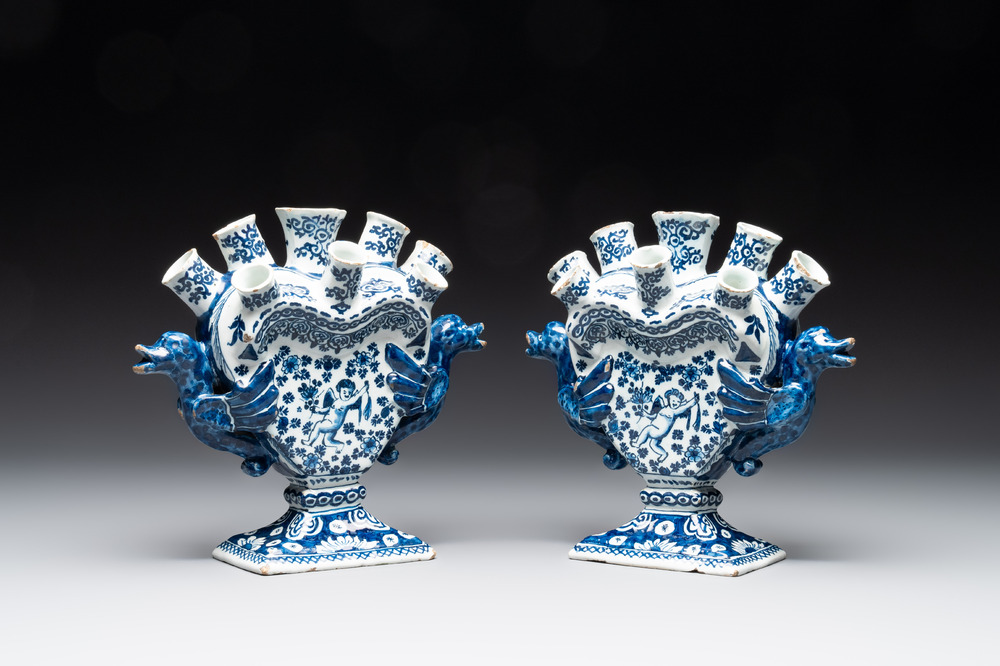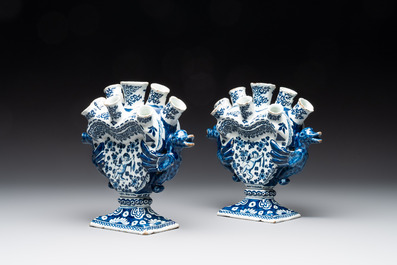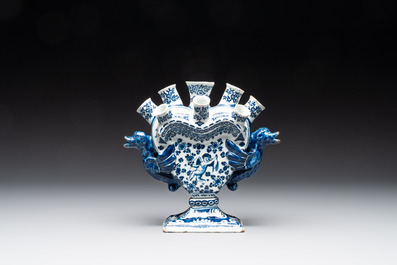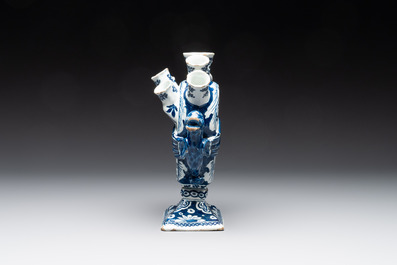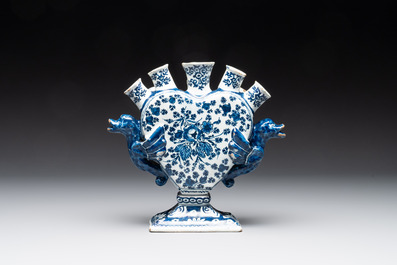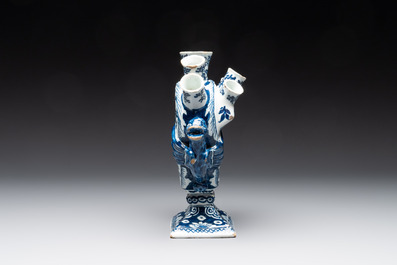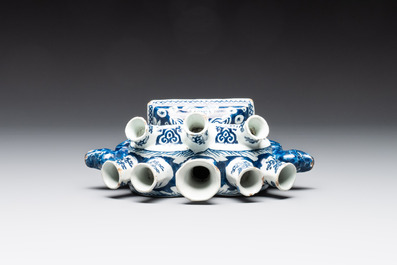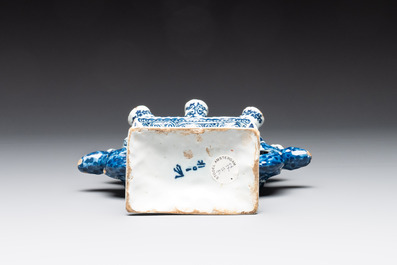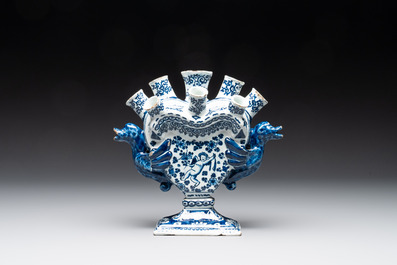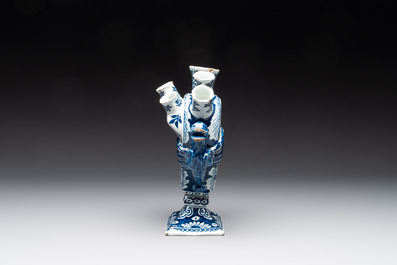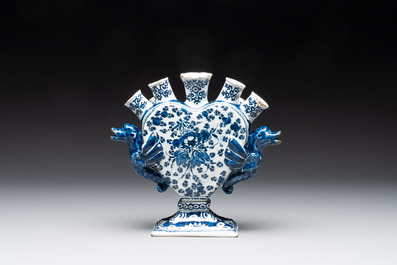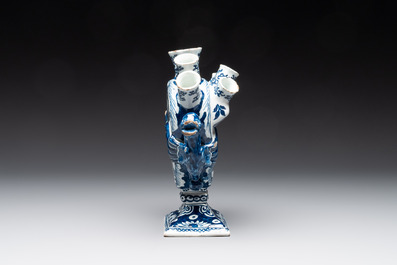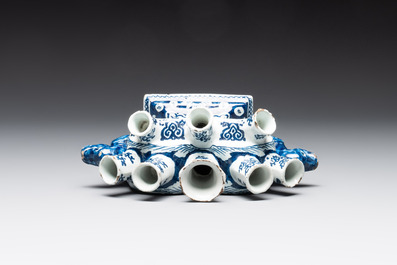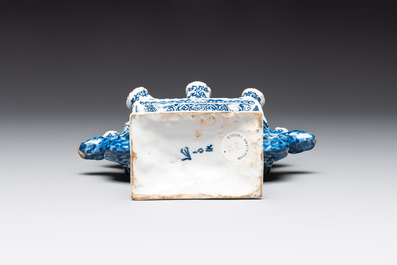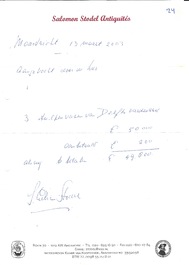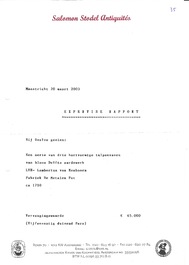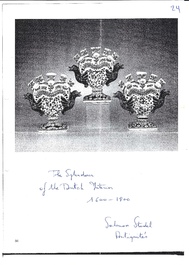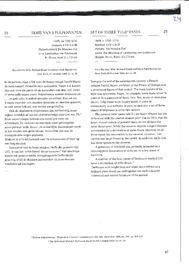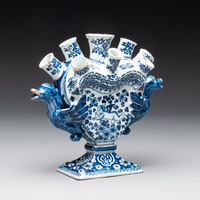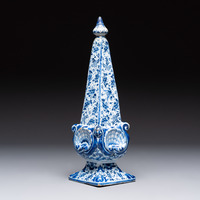We have to double-check your registration and make sure this is not an automated entry in our system. Please complete the test below...
A pair of blue and white Dutch Delft heart-shaped tulip vases, early 18th C.
H.: 21 cm
Marked LVE-1-0-IK on the base for Lambertus van Eenhoorn, "De Metaale Pot" workshop, Delft, active 1691-1721.
Provenance:
- An important Belgian private collection.
- With labels for Salomon Stodel Antiquités, Amsterdam, The Netherlands, acquired on 13 March 2003 and with their original invoice and certificate of expertise. (see scans)
- Ex-collection Mrs. Richard Ernst, Sotheby's Park Bernet Inc., New York, 31 October 1981, lot no. 26.
These vases were featured as in 'The Splendour of the Dutch Interior 1600 - 1800' by R.J. Baarsen and J. Estrie, published by Salomon Stodel Antiquités, p. 86-87. (see scan and article below)
Towards the end of the seventeenth century, a French refugee Daniel Marot, architect of the Prince of Orange, was a prominent figure of that period. The main feature of his style was symmetry. Vases, for example, were made eitiser in pairs or in a garniture of three, four, five, seven or even nine pieces. Tulip vases were usually made in pairs or occasionally as a solitaire. It must be said that a set of three identical tulipvases is quite rare Indeed.
The present three vases (see ill.) are heart shaped but the difference with the obelisk-shaped pair [cat.no 24) is that the heart-shaped panels of present vases do not all have the same decoration. While the obverse depicts winged cherubs surrounded by a decoration of mille-fleurs, identical on all three vases, the decoration to the reverse, however, only carries one large lower in the centre. In addition, each vase has three spouts to the obverse.
A garniture of this kind was probably intended as a chimneypiece decoration or to be set on a low piece of furniture.
A number of the best pieces of Delftware marked LVE have a decoration of mille-fleurs.
Delftware with bright blue and white decorations on a brilliant glaze stood out well against the dark-coloured rosewood and walnut furniture of the period.
